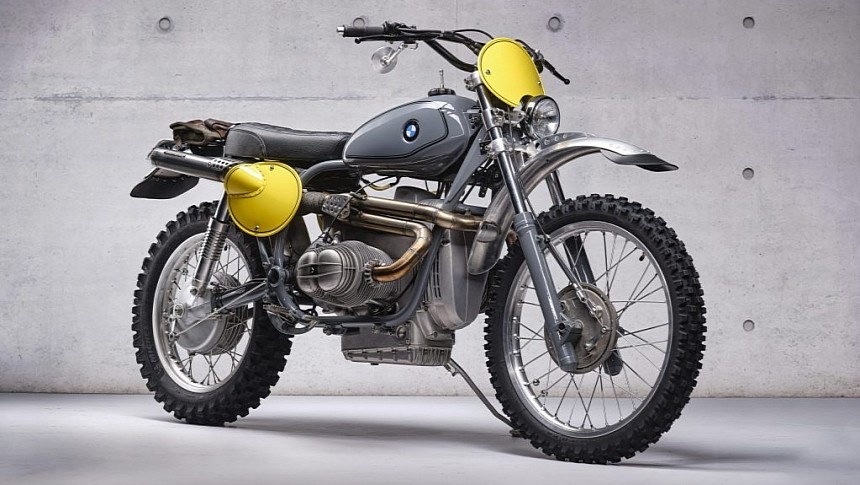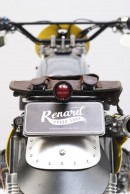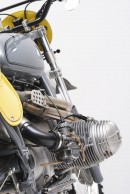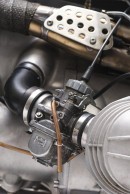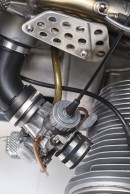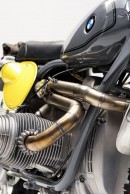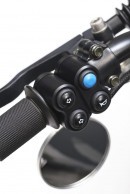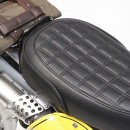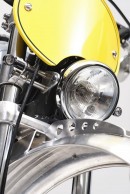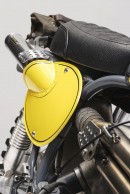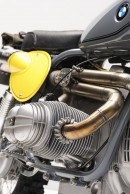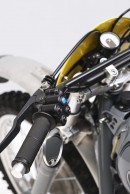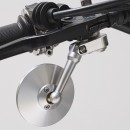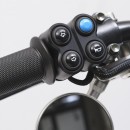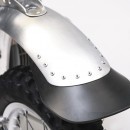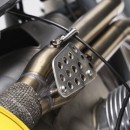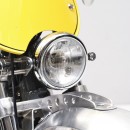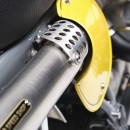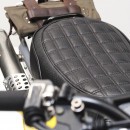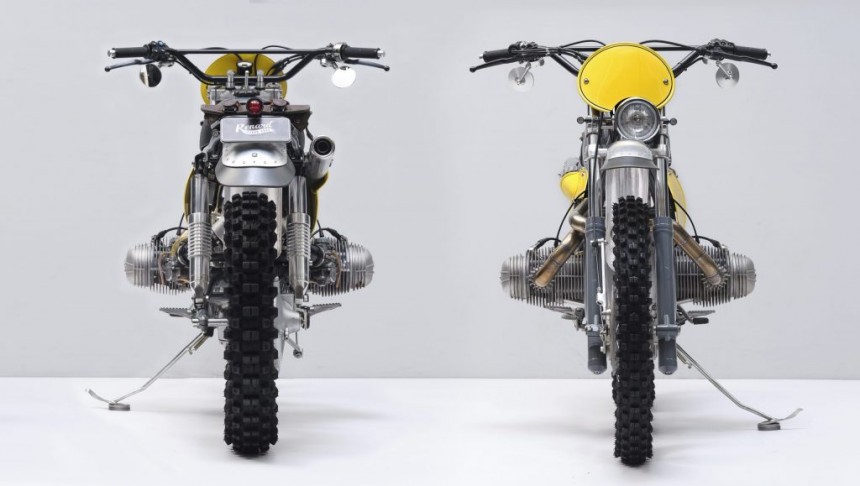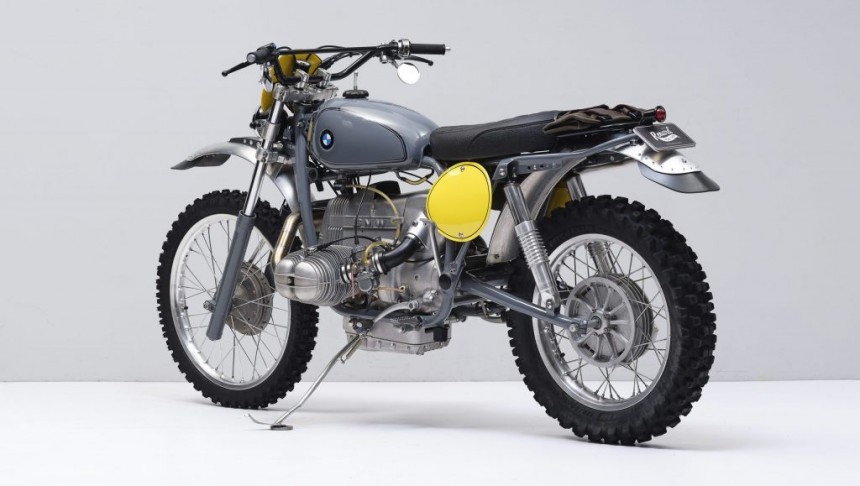Founded by Andres Uibomae back in 2008, Renard Speed Shop of Tallinn, Estonia is best-known for the limited-series Grand Tourer. An unknown number of these specimens have been produced between 2012 and 2016, all powered by the 1,151cc Quattrovalvole V-twin from Moto Guzzi. This powerplant can be found on models like the Griso and Stelvio, but what really made Grand Tourers stand out was their incredible unibody construction.
It only takes a quick look at these machines to see what Renard is capable of, and their one-off ventures are no less intriguing. Andres and his crew started building individual custom projects around 2014, never shying away from experimenting with different styles or motorcycle brands. Completed at the tail end of 2020, the bike shown above is based on a BMW R80/7 from the model-year 1979.
The donor had been lying around Renard’s workshop for some time, and it became something of a parts bin special following their makeover. It now carries an array of parts taken from various CZ motorcycles, all topped with design cues nodding to the classic BMWs which took part in the International Six Days Trial long ago. There’s clearly a lot for us to cover here, so let’s dive in without further ado.
Once the R80/7 had been taken apart, the Estonian artisans busied themselves with a complete overhaul of its air-cooled 797cc boxer-twin mill. The freshly-refurbished engine was subsequently paired with the four-speed transmission of an older BMW, and the high-mounted exhaust it now employs is custom stainless-steel part built from scratch. It runs a two-into-one configuration toward a bespoke muffler on the right-hand side.
Having ticked the powertrain-related work off the list, Renard moved on to the Beemer’s chassis. The suspension department is where the CZ parts start showing up, with the rear shocks and fork lowers all hailing from an unidentified CZ motocross bike. This machine was kind enough to also donate its triple clamps, 21-inch front wheel, and corresponding drum brake, but the fork stanchions are still the original items from Motorrad.
At the back, we still find the stock 18-inch hoop and braking hardware, while the swingarm has been extended ever so slightly to suit the replacement shocks. Both wheels are wrapped in chunky dual-purpose knobbies to let this creature live up to its scrambler designation. As far as the R80’s new bodywork is concerned, CZ componentry once again takes center-stage in the form of a compact fuel tank.
Andres and his squad had its underside revised to fit on the BMW’s frame like a glove, also installing a see-through tubular fuel gauge on the left while they were at it. For the fenders, the guys turned to aftermarket solutions from Parafanghi Bastia. The Italian firm supplied a sizeable pair of high-mounted mudguards, and the rear unit has been topped with a handmade license plate bracket and a circular LED taillight.
Speaking of the R80 scrambler’s rear section, its subframe is a heavily modified version of the original, carrying a tailor-made aluminum seat pan and a small luggage rack. The latter was transplanted from another unnamed motorcycle and adapted for the Six Days-inspired airhead. On the other hand, the saddle is a custom-made item featuring comfy padding and black vinyl upholstery stitched together in-house.
As for the stylish tool pouch placed behind the seat, it came from Renard Speed Shop’s proprietary catalog of motorcycling accessories. To finish things off at six o’clock, the project’s authors added oval side covers made of aluminum, emulating the look of number plates found on vintage enduro bikes. A similar module can also be spotted at the front, fronting a single Motogadget dial and a cross-braced MX handlebar.
Snazzy grips, underslung Oberon mirrors, and CNC-machined switches round out the cockpit equipment, but there’s more custom wizardry going on further ahead. An offset headlamp is fitted toward the left, secured in place by way of revised Honda XBR mounting paraphernalia. It’s flanked by LED turn signals similar to those found on each side of the license plate holder.
This R80/7’s ergonomic package is completed by a set of replacement foot pegs originating from a BMW R nineT Scrambler. Last but not least, a stunning color scheme makes the whole build come together while enforcing the vintage Six Days racer vibe. A blueish shade of grey covers items like the gas tank, fork lowers, and frame, but the number plates have all been painted yellow.
Black pinstripes are also present on these plates, as well as on each side of the CZ tank. With the customization process completed, the resulting entity was appropriately nicknamed Six Days and put up for sale at €25,000. As you might expect, it didn’t take long for an eager client to show up and snatch this scrambled airhead, which was most certainly worth every penny!
The donor had been lying around Renard’s workshop for some time, and it became something of a parts bin special following their makeover. It now carries an array of parts taken from various CZ motorcycles, all topped with design cues nodding to the classic BMWs which took part in the International Six Days Trial long ago. There’s clearly a lot for us to cover here, so let’s dive in without further ado.
Once the R80/7 had been taken apart, the Estonian artisans busied themselves with a complete overhaul of its air-cooled 797cc boxer-twin mill. The freshly-refurbished engine was subsequently paired with the four-speed transmission of an older BMW, and the high-mounted exhaust it now employs is custom stainless-steel part built from scratch. It runs a two-into-one configuration toward a bespoke muffler on the right-hand side.
Having ticked the powertrain-related work off the list, Renard moved on to the Beemer’s chassis. The suspension department is where the CZ parts start showing up, with the rear shocks and fork lowers all hailing from an unidentified CZ motocross bike. This machine was kind enough to also donate its triple clamps, 21-inch front wheel, and corresponding drum brake, but the fork stanchions are still the original items from Motorrad.
Andres and his squad had its underside revised to fit on the BMW’s frame like a glove, also installing a see-through tubular fuel gauge on the left while they were at it. For the fenders, the guys turned to aftermarket solutions from Parafanghi Bastia. The Italian firm supplied a sizeable pair of high-mounted mudguards, and the rear unit has been topped with a handmade license plate bracket and a circular LED taillight.
Speaking of the R80 scrambler’s rear section, its subframe is a heavily modified version of the original, carrying a tailor-made aluminum seat pan and a small luggage rack. The latter was transplanted from another unnamed motorcycle and adapted for the Six Days-inspired airhead. On the other hand, the saddle is a custom-made item featuring comfy padding and black vinyl upholstery stitched together in-house.
Snazzy grips, underslung Oberon mirrors, and CNC-machined switches round out the cockpit equipment, but there’s more custom wizardry going on further ahead. An offset headlamp is fitted toward the left, secured in place by way of revised Honda XBR mounting paraphernalia. It’s flanked by LED turn signals similar to those found on each side of the license plate holder.
This R80/7’s ergonomic package is completed by a set of replacement foot pegs originating from a BMW R nineT Scrambler. Last but not least, a stunning color scheme makes the whole build come together while enforcing the vintage Six Days racer vibe. A blueish shade of grey covers items like the gas tank, fork lowers, and frame, but the number plates have all been painted yellow.
Black pinstripes are also present on these plates, as well as on each side of the CZ tank. With the customization process completed, the resulting entity was appropriately nicknamed Six Days and put up for sale at €25,000. As you might expect, it didn’t take long for an eager client to show up and snatch this scrambled airhead, which was most certainly worth every penny!
